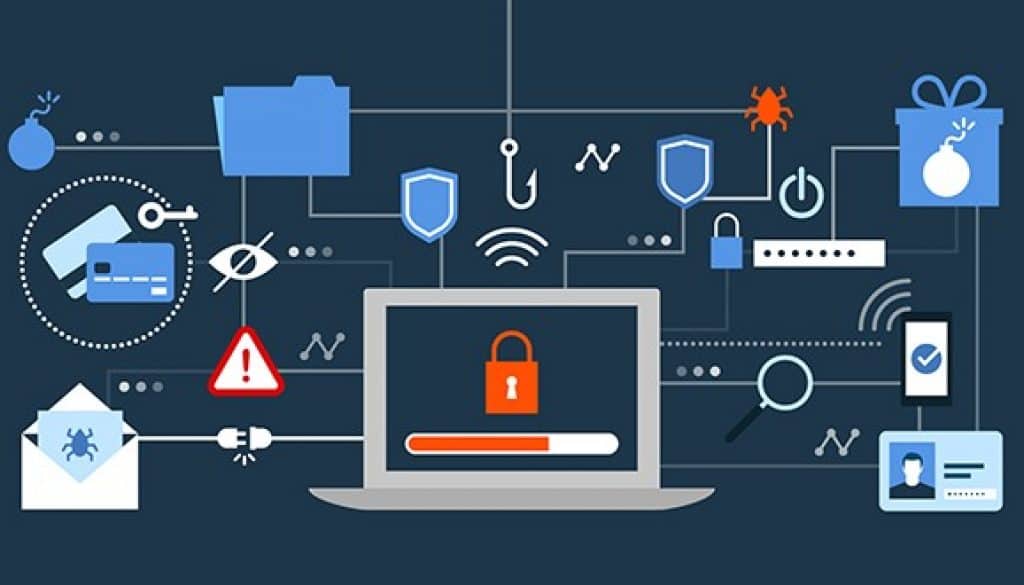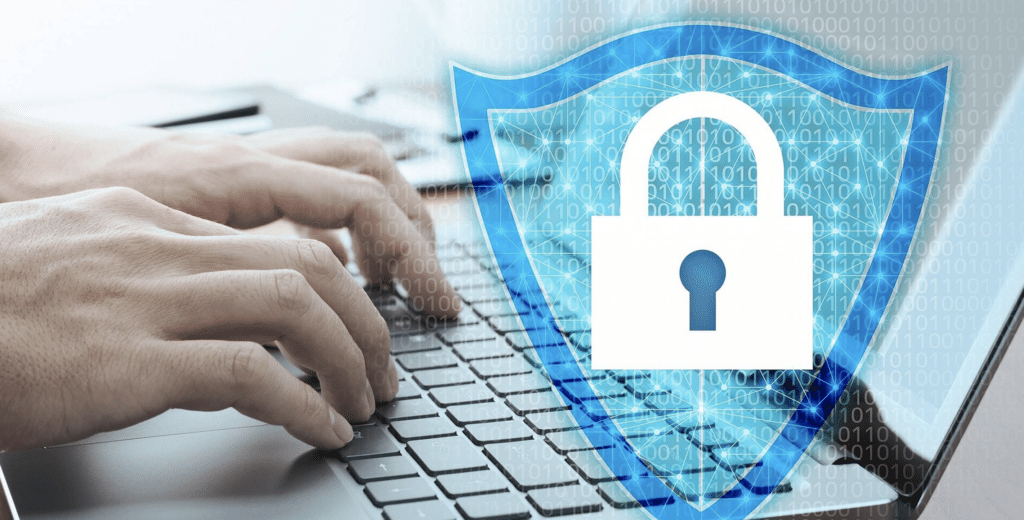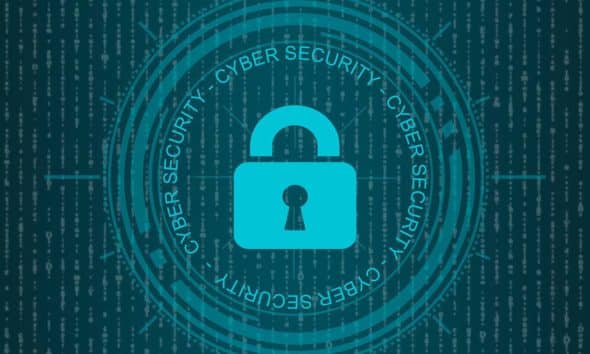In the fast-paced digital world, cybersecurity has become a critical concern for individuals and organizations. This comprehensive analysis will explore the need for a differentiated cybersecurity strategy, highlighting the importance of specialized expertise, customized strategies, and how these measures can lead to significant savings in time and resources. From the evolution of cyber threats to the implementation of emerging technologies, dive into the complex cybersecurity landscape.(era)
In today’s digital fabric, artificial intelligence (AI) emerges as a transformative force, reshaping the way we interact with technology and opening up new frontiers of possibilities. This comprehensive analysis will explore the vast scope of artificial intelligence, from its current foundations and applications to future prospects.
We will delve into the importance of specialized AI expertise, highlighting how experts in the field play a critical role in the development and effective implementation of AI-based solutions. In addition, we will examine how customized strategies in AI implementation can make a difference, tailoring these innovations to the specific needs of various industries and sectors. From machine learning to neural networks, this analysis will address the key aspects of artificial intelligence and its impact on our ever-evolving society.
Evolution of Cyber Threats:
Analyzing the current cyber threat landscape.
Identifying new tactics used by cybercriminals.
The importance of adapting to constantly evolving threats.
- Cybersecurity Expertise:
Defining the crucial role of cybersecurity experts.
The importance of continuous training and skills upgrades.
How specialized expertise can make a difference in threat detection and mitigation.
- Customized Strategies for Protection:
The need for customized strategies rather than generic approaches.
Tailoring cybersecurity to the specific needs of each organization.
Implementing customized security controls to address unique vulnerabilities.
- Saving Cybersecurity Time and Resources:
Using automated technologies to optimize security processes.
Efficient strategies to respond quickly to security incidents.
Saving resources through proactive prevention and effective response.
- Relevant Keywords in Cybersecurity:
Identification of crucial keywords in cybersecurity.
How keywords affect visibility and relevance in online searches.
Examples of keywords: “cybersecurity”, “cyber threats”, “cyber defense”.
- Implementation of Emerging Technologies:
Incorporating artificial intelligence and machine learning into security strategies.
The role of blockchain in protecting sensitive data.
New technologies that are transforming the cybersecurity landscape.
- Unique Challenges in Cybersecurity:
Exploring common challenges faced by cybersecurity professionals.
How the complexity of threats and the rise of connected devices affect security strategies.
Confronting the cybersecurity talent shortage.
- Integrating Compliance Strategies:
The relationship between cybersecurity and regulatory requirements.
Strategies to ensure regulatory compliance and effective security.
Examples of key cybersecurity regulations.
- Cybersecurity in the Enterprise Environment:
The importance of a cybersecurity culture within organizations.
Strategies for educating employees about safe online practices.
Protecting enterprise infrastructure against targeted attacks.
- Impact of Digital Transformation on Cybersecurity:
- Analyzing how digital transformation has expanded the attack surface.
- Strategies to protect digital infrastructure in an ever-changing environment.
- The interconnection of devices and its impact on security.
- Security Analytics: Extracting Value from Security Data:
- The role of analytics in identifying patterns and threats.
- How analytics tools can improve detection and response.
- Case studies highlighting the success of analytics in cybersecurity.
- Advanced Detection and Response Strategies:
- Development of proactive strategies for early threat detection.
- Implementation of rapid response systems to minimize the impact of security incidents.
- Examples of advanced detection and response technologies.
- Cybersecurity Education and Awareness:
- The importance of continuing security education for employees and users.
- Effective strategies for creating awareness of cyber threats.
- The connection between awareness and risk reduction.
- Collaboration in the Cybersecurity Ecosystem:
- Fostering collaboration between organizations, governments, and research entities.
- The importance of sharing threat information for collective defense.
- Success stories of effective collaboration in the cybersecurity ecosystem.
- Future of Cybersecurity: Perspectives and Emerging Trends:
- Projections of how cybersecurity will evolve in the future.
- Emerging trends that will shape the cybersecurity landscape.
-The anticipation of challenges and opportunities on the horizon.
- Ethical Challenges in Cybersecurity:
- Addressing ethical issues in the research and development of cybersecurity technologies.
- Considering ethical implications in the collection and use of data for security.
- The importance of sound ethical policies in the field of cybersecurity.
- Strategies for Protecting Sensitive Data:
- Developing policies and technologies to protect sensitive data.
- Effective encryption strategies to ensure confidentiality.
- Compliance with privacy and data protection regulations.
- Cyber Resilience in an Interconnected World:
- Building resilience to cope with cyber attacks and disasters.
- Strategies for rapid recovery and business continuity.
- Examples of organizations that have demonstrated resilience in the face of significant attacks.
- Cybersecurity Talent Development:
- Overcoming the cybersecurity talent shortage.
- Strategies for recruiting, training and retaining cybersecurity professionals.
- The importance of educational programs and certifications in training experts.
- Continuous Risk and Vulnerability Assessment:
- Implementing risk assessment programs on an ongoing basis.
- The relationship between risk assessment and strategic decision making.
- Tools and methodologies for vulnerability identification.
- The Role of Artificial Intelligence in Cyber Defense:
- Incorporating artificial intelligence to improve detection and response.
- Development of advanced algorithms to anticipate threats.
- Success stories highlighting the positive impact of artificial intelligence in cybersecurity.
- Global Collaboration on Cyber Threat Response:
- Exploring international initiatives and agreements to address cyber threats.
- The importance of global information sharing for effective defense.
- Examples of successful collaboration between countries in responding to cyber incidents.
- Developing Cybersecurity for IoT Devices:
- Strategies for securing IoT devices in an interconnected environment.
- Unique security challenges associated with the proliferation of IoT devices.
- The need for standards and regulations in IoT security.
- Impact of Large Events on Cybersecurity:
- Analyzing how events such as pandemics or natural disasters affect cybersecurity.
- Strategies for maintaining cybersecurity in extraordinary situations.
- Lessons learned from past events and their application in future preparedness.
- Educating Society about Cybersecurity:
- Strategies for educating society at large about safe online practices.
- The importance of cyber awareness from an early age.
- Collaboration between governments, businesses and non-profit organizations to promote cybersecurity education.
Navigating Toward a Safer Cyber Future: In the conclusion, we will reflect on the need for differentiated cybersecurity strategies. From specialized expertise to customized strategies, cybersecurity is not just a set of measures, but a dynamic and adaptive approach. By embracing innovation, collaboration and continuous awareness, organizations can meet cyber challenges with resilience and preparedness. Ultimately, cybersecurity doesn’t just require a different strategy; it requires an evolving mindset to safeguard the ever-changing digital fabric of our era.
These case studies reveal how organizations, when faced with diverse threats, have responded with proactive measures and key learnings. Staff awareness, implementation of advanced technologies and global collaboration emerge as fundamental elements in cyber defense. The future of cybersecurity demands not only sound strategies, but also a resilient and evolving mindset. Thus, we are navigating towards a more secure digital landscape, where innovation and collaboration are the keys to effective defense against ever-evolving threats.
Cybersecurity Case Studies: Addressing Challenges and Applying Effective Strategies
Ransomware Attack on a Financial Institution:
Challenge: A financial institution experiences a ransomware attack that encrypts critical financial data.
Strategy: Implementation of proactive measures such as regular backups, staff training in early threat detection and coordinated response with cybersecurity experts.
Result: The institution avoids paying ransom, restores data from backups and strengthens its defenses to prevent future attacks.
Data Leakage in a Technology Company:
Challenge: A technology company faces a data leak compromising confidential customer information.
Strategy: Immediate response with a forensic investigation, transparent notification to affected parties, improved access controls and revised security policies.
Result: Restored customer confidence, implemented enhanced security measures and adjusted internal policies.
Insider Threat at a Research Firm:
Challenge: An insider threat compromised intellectual property at a research company.
Strategy: Continuous monitoring of activities, implementation of role-based access policies and education of personnel on the importance of security.
Result: Early identification of the incident, mitigation of damage, and adjustment of internal processes to prevent future insider threats.
Social Engineering Attack on a Government Organization:
Challenge: A government organization faces a social engineering attack that compromises sensitive information.
Strategy: Training of staff in identifying social engineering attacks, implementation of two-factor authentication and regular security posture reviews.
Result: Prevention of similar attacks, strengthening of security awareness and protection of government data.
Imagine a situation where a financial institution faces a data breach due to a targeted attack that compromises customers’ sensitive financial information. Faced with this challenge, the strategy implemented focuses on enhancing system security measures, adopting advanced threat detection technologies and collaborating with cybersecurity experts.
This proactive response allows the financial institution to quickly mitigate the impact of the incident, protect the integrity of financial data and strengthen its defenses against cyber threats. These scenarios highlight the need for customized strategies tailored to sector-specific risks and underscore the importance of collaboration and innovation in cybersecurity.
Supply Chain Engagement in a Manufacturing Enterprise:
Challenge: A manufacturing company faces a supply chain compromise that leads to the insertion of malware into distributed products.
Strategy: Thorough supplier assessment, implementation of supply chain security controls and regular audits.
Result: Early identification of the threat, recall of affected products and reinforcement of supply chain security.
Imagine a scenario in which a government institution is hit by a ransomware attack that compromises its ability to access and manage crucial data. In response to this challenge, the strategy focuses on implementing proactive measures, such as robust backup systems, cybersecurity awareness training for employees, and the adoption of advanced ransomware detection technologies.
This strategy enables the government entity to recover quickly from the attack, minimizing data loss and strengthening its defenses against future ransomware incidents. These cases illustrate the urgent need for customized strategies that address sector-specific threats and highlight the importance of preparedness and rapid response in cybersecurity.
- Phishing Attack on a Service Company:
Challenge: Employees of a service company fall for a sophisticated phishing attack, compromising login credentials.
Strategy: Implementation of phishing awareness programs, enhanced mail filters and multi-factor authentication to reinforce security.
Result: Significant reduction in successful phishing attacks, increased staff awareness and protection of confidential information.
Now imagine a situation where a financial institution faces a social engineering attack that seeks to gain unauthorized access to crucial systems. Faced with this challenge, the strategy implemented focuses on improving authentication protocols, constantly monitoring behavioral patterns and collaborating with cybersecurity experts. This response enables the financial institution to effectively detect and neutralize the social engineering attempt, strengthening the protection of sensitive financial data and preserving the trust of its customers. These scenarios underscore the critical need for customized strategies that address sector-specific vulnerabilities and the importance of adaptability in defending against cyber threats.
- Denial of Service (DDoS) Attack on an Online Platform:
Challenge: An online platform suffers a DDoS attack that affects the availability of services.
Strategy: Implementation of DDoS mitigation services, constant monitoring of traffic and improvement of network infrastructure.
Result: Improved resilience to DDoS attacks, minimized downtime and maintained user confidence.
Now, consider a situation where a government entity faces a ransomware threat that compromises the integrity of its critical systems. Faced with this challenge, the strategy adopted focuses on implementing proactive measures, such as network segmentation, regular backups and cybersecurity education for employees. As a result, the entity manages to resist and mitigate the impact of ransomware, quickly recovering the functionality of its systems and avoiding ransom payments. These incidents underscore the importance of comprehensive preparedness and the implementation of targeted strategies to protect digital assets against increasingly sophisticated and persistent threats.
- Network Intrusion at an Educational Institution:
Challenge: An educational institution faces a network intrusion, putting student and administrative data at risk.
Strategy: Upgrade of firewalls, forensic analysis to determine the extent of the compromise and strengthening of security policies.
Result: Identification and elimination of threats, implementation of preventive measures and continued protection of sensitive data.
Imagine a scenario where a technology company experiences a phishing attack targeting its employees, compromising credentials and putting the company’s security at risk. Faced with this challenge, the strategy implemented focuses on regular cybersecurity awareness training, implementation of multi-factor authentication and constant monitoring of suspicious activity. As a result, the company manages to prevent unauthorized access, proactively detect phishing attempts and strengthen the resilience of its staff to cyber threats. These cases highlight the importance of ongoing preparation and training to mitigate the risks associated with the increasingly sophisticated tactics of malicious actors online.
- Attack on IoT Devices at a Healthcare Enterprise:
Challenge: IoT devices in a healthcare enterprise are compromised, threatening the integrity of medical data.
Strategy: Network segmentation, data encryption on IoT devices and regular security audits.
Result: Isolation of compromised devices, strengthening IoT device security and protecting sensitive medical information.
Consider another situation where a supply chain is faced with ransomware affecting its critical management systems. Faced with this challenge, the strategy implemented focuses on regular backups, network segmentation, and ongoing cybersecurity awareness training for employees. As a result, the supply chain is able to recover its systems quickly by restoring backups, minimizing operational impact and avoiding ransom payments. These cases demonstrate the importance of addressing threats from multiple fronts, combining technical and educational measures to strengthen resilience against cyber attacks.
- Zero-Risk Threat in a Software Development Company: – Challenge: A software development company faces a zero-risk threat that exploits an unknown vulnerability.
- Strategy: Implementation of heuristic detection systems, automatic security updates and collaboration with the security community. – Result: Rapid identification and patching of vulnerabilities, continuous improvement of software security and strengthening of resistance to unknown threats.
Consider another situation where a financial institution faces a phishing attack targeting its customers. Faced with this challenge, the strategy implemented focuses on user awareness through online training programs, implementation of advanced email filters, and collaboration with cybersecurity organizations to share indicators of compromise.
As a result, the institution manages to significantly reduce the success rate of phishing attacks, protecting its customers’ confidential information and strengthening trust in its financial services. These cases exemplify the need for adaptive and multidimensional cybersecurity strategies, where user education, external collaboration and the implementation of advanced technologies combine to mitigate risks and preserve digital integrity.
- Confidential Information Leakage at a Legal Firm: – Challenge: A legal firm experiences a confidential information leakage due to the loss of mobile devices. – Strategy: Encryption of data on mobile devices, implementation of device management policies and regular training on mobile security. – Result: Minimized risk of data loss, increased awareness of device management and protection of confidential client information.
These case examples illustrate the diversity of challenges organizations can face in cybersecurity and how the implementation of specific strategies can lead to successful outcomes. Each situation highlights the importance of preparedness, rapid response and continuous improvement of security practices to safeguard digital assets and the integrity of business operations.
Imagine a situation where a technology company faces a ransomware attack that threatens to encrypt all of its crucial files. Faced with this challenge, the strategy implemented involves a combination of proactive measures, such as segmenting the network to contain the spread of malware, adopting advanced detection and response solutions, and regularly training staff in cybersecurity practices.
The result is a successful defense against ransomware attack, preventing data loss and ensuring operational continuity. These cases highlight the need for a holistic and adaptive approach to cybersecurity, where preparedness, early detection and effective response combine to protect the digital resilience of organizations in an ever-changing landscape.






